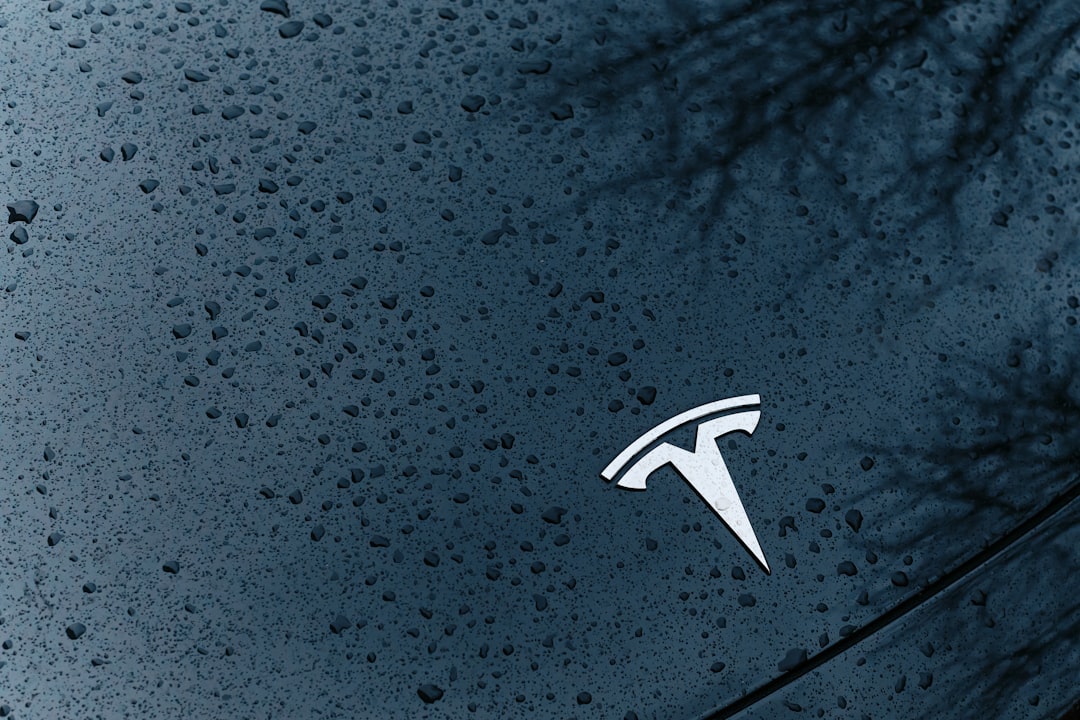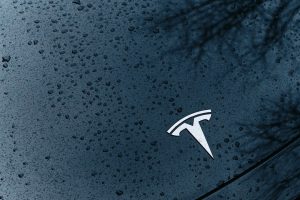Tesla’s Shift: From Cars to Tech Innovations
Explore Tesla’s evolution from car manufacturing to tech innovation. Discover what this shift means for the future. Read more now.
Tesla’s Evolution Beyond Automobile Manufacturing
Energy Solutions
Tesla has significantly expanded its focus beyond electric vehicles to become a major player in the energy sector. The company’s energy division, Tesla Energy, offers a range of products designed to harness renewable energy.
This includes the Powerwall, a home battery system that stores energy for residential use, and the Powerpack, which is designed for commercial and utility-scale projects. These innovations aim to reduce reliance on fossil fuels and promote sustainable energy solutions.
Furthermore, Tesla’s Solar Roof integrates solar panels seamlessly into roof tiles, providing an aesthetically pleasing option for generating solar power.
This product exemplifies Tesla’s commitment to creating a sustainable energy ecosystem, where homes and businesses can generate, store, and consume renewable energy efficiently.
Autonomous Driving Technology
Another area where Tesla is making strides is in autonomous driving technology. The company’s Autopilot system is continuously evolving, with advancements in Full Self-Driving (FSD) capabilities.
Tesla’s approach to self-driving technology relies heavily on artificial intelligence and machine learning, utilizing data collected from its vast fleet of vehicles to improve the system’s accuracy and safety.
By investing in autonomous driving, Tesla is positioning itself as a leader in the future of transportation, where vehicles can operate without human intervention. This technology not only enhances the driving experience but also has the potential to revolutionize urban mobility, reduce traffic congestion, and improve road safety.
Artificial Intelligence and Robotics
Tesla’s ambitions extend into the realm of artificial intelligence and robotics.
The company’s development of the Tesla Bot, a humanoid robot designed to perform repetitive and dangerous tasks, showcases its commitment to leveraging AI for practical applications. This innovation highlights Tesla’s vision of integrating robotics into everyday life, potentially transforming industries such as manufacturing, logistics, and healthcare.
Moreover, Tesla’s AI expertise is not limited to robotics; it also plays a crucial role in enhancing vehicle safety and performance.
The company’s AI-driven systems are designed to process vast amounts of data in real-time, enabling features like advanced driver assistance and predictive maintenance.
Global Impact and Future Prospects
Tesla’s evolution beyond automobile manufacturing is reshaping industries and influencing global trends. By diversifying its portfolio, Tesla is not only driving the transition to sustainable energy but also paving the way for technological advancements that extend beyond transportation.
The company’s innovative approach and relentless pursuit of progress continue to position it as a transformative force in the global market.
As Tesla explores new frontiers, its impact on various sectors is expected to grow, with potential breakthroughs in energy storage, AI, and robotics. The company’s commitment to innovation and sustainability ensures that it remains at the forefront of shaping a cleaner, more efficient future.
Diversification into Various Industries
Energy Solutions
Tesla’s foray into the energy sector is a significant step beyond its automotive roots.
The company has developed a range of products aimed at revolutionizing energy consumption and storage. Tesla’s solar panels and Solar Roof offer sustainable energy solutions for homes and businesses, reducing reliance on traditional power sources.
Additionally, Tesla’s Powerwall and Powerpack products provide efficient energy storage solutions, allowing users to store solar energy for later use, thereby promoting energy independence.
Battery Technology
At the heart of Tesla’s diversification strategy is its cutting-edge battery technology. The company has invested heavily in developing advanced lithium-ion batteries that power not only its electric vehicles but also its energy storage products.
Tesla’s Gigafactories play a crucial role in scaling battery production, aiming to meet the growing demand for sustainable energy solutions. By improving battery efficiency and reducing costs, Tesla is paving the way for broader adoption of electric vehicles and renewable energy systems.
Autonomous Driving
Tesla is at the forefront of autonomous driving technology, with its Autopilot and Full Self-Driving (FSD) systems.
These technologies are designed to enhance vehicle safety and convenience by automating driving tasks. Tesla’s continuous software updates and data-driven approach allow the company to refine and improve its autonomous capabilities.
The development of fully autonomous vehicles has the potential to transform transportation, making it safer and more efficient.
Artificial Intelligence and Software
Beyond hardware, Tesla is heavily invested in software development and artificial intelligence (AI). The company’s AI capabilities are integral to its autonomous driving systems, enabling vehicles to navigate complex environments and make real-time decisions.
Tesla’s commitment to software innovation extends to its vehicle operating systems, which receive regular over-the-air updates, enhancing functionality and user experience. This focus on software positions Tesla as a leader in the tech-driven future of transportation.
Space Exploration Collaboration
While not directly a Tesla venture, the company’s close ties with SpaceX, founded by Elon Musk, highlight its broader ambitions.
SpaceX’s advancements in space exploration and satellite technology complement Tesla’s vision of a sustainable future. The collaboration between these companies underscores a shared commitment to innovation and technological progress, pushing the boundaries of what is possible both on Earth and beyond.
Tech Innovations Redefining Tesla’s Identity
Autonomous Driving Technology
Tesla’s advancements in autonomous driving technology have significantly contributed to its transformation beyond a traditional car manufacturer.
The company’s Full Self-Driving (FSD) software represents a leap forward in vehicle autonomy, utilizing a complex network of cameras, sensors, and AI algorithms to navigate roads with minimal human intervention. This technology not only enhances the driving experience but also positions Tesla as a leader in the future of transportation, where vehicles are expected to operate independently.
Energy Solutions and Sustainability
Beyond automobiles, Tesla has made substantial strides in energy solutions, emphasizing sustainability and renewable energy.
The company’s development of solar panels and the Powerwall energy storage system demonstrates its commitment to reducing global dependence on fossil fuels. These innovations allow homeowners and businesses to harness solar energy efficiently, store it, and use it as needed, thus promoting a more sustainable lifestyle.
Tesla’s energy division is rapidly growing, reinforcing its identity as a clean energy pioneer.
Battery Technology Advancements
At the core of Tesla’s innovation is its cutting-edge battery technology. The company’s investment in research and development has led to significant improvements in battery capacity, efficiency, and cost.
Tesla’s Gigafactories are central to this effort, producing batteries at scale to meet the growing demand for electric vehicles and energy storage solutions. These advancements not only extend the range and performance of Tesla vehicles but also pave the way for broader applications in various industries.
Artificial Intelligence and Machine Learning
Tesla’s integration of artificial intelligence and machine learning extends beyond autonomous driving.
The company utilizes AI to enhance vehicle performance, optimize energy consumption, and improve user interfaces. Machine learning algorithms continuously process data from Tesla’s fleet, enabling real-time updates and improvements.
This approach ensures that Tesla vehicles remain at the forefront of technological innovation, offering features that adapt to user needs and driving conditions.
Software and Connectivity
Software development is a key component of Tesla’s identity, distinguishing it from traditional automakers. Tesla’s vehicles are equipped with over-the-air software update capabilities, allowing for continuous enhancement of features and performance.
This connectivity ensures that Tesla cars remain up-to-date with the latest advancements, providing users with a dynamic and evolving driving experience. The seamless integration of software and hardware exemplifies Tesla’s approach to innovation, where technology and transportation intersect.
Future Vision Beyond Traditional Automotive Sector
Energy Solutions
Tesla’s commitment to revolutionizing energy consumption extends beyond electric vehicles.
The company’s focus on sustainable energy solutions is evident in its development of solar products and energy storage systems. Tesla’s Solar Roof and Powerwall are designed to harness solar energy efficiently and store it for residential and commercial use, reducing reliance on traditional power grids and promoting a sustainable energy future.
By integrating energy generation and storage, Tesla aims to create a decentralized energy ecosystem.
This approach not only provides consumers with greater control over their energy usage but also contributes to the reduction of carbon emissions on a larger scale. Tesla’s vision is to make clean energy accessible and affordable, paving the way for a sustainable future.
Autonomous Driving Technology
Tesla’s advancements in autonomous driving technology are a testament to its vision beyond the conventional automotive industry.
The company’s Full Self-Driving (FSD) software is designed to offer a seamless and safe autonomous driving experience. By leveraging artificial intelligence and machine learning, Tesla continuously improves its autonomous capabilities, aiming to achieve full autonomy in the near future.
This technology not only enhances driver convenience but also has the potential to significantly reduce traffic accidents and improve road safety.
Tesla’s investment in autonomous driving is a clear indication of its intent to lead the transition towards a future where transportation is not just electric but also autonomous.
Artificial Intelligence and Data Utilization
At the core of Tesla’s transformation is its strategic use of artificial intelligence and data. The company collects vast amounts of data from its fleet of vehicles, which is then used to refine and enhance its technologies.
This data-driven approach allows Tesla to optimize vehicle performance, improve safety features, and advance its autonomous driving capabilities.
Furthermore, Tesla’s AI initiatives extend beyond vehicles. The development of the Dojo supercomputer exemplifies Tesla’s ambition to harness AI for broader applications.
Dojo is designed to process and analyze large datasets, facilitating advancements in neural network training and AI research. This positions Tesla as a leader not only in the automotive sector but also in the realm of artificial intelligence.
FAQ
Q1: What are the potential cost implications of adopting Tesla’s new focus beyond being a car company?
A1: As Tesla expands its focus beyond traditional automotive manufacturing to include energy solutions, artificial intelligence, and robotics, the cost implications for consumers and businesses can vary significantly. For individual consumers, the integration of Tesla’s energy products, such as solar panels and Powerwall batteries, may involve upfront costs that are offset by long-term savings on energy bills. Businesses looking to adopt Tesla’s advanced AI and robotics solutions might face higher initial investments, but these can lead to increased efficiency and cost savings over time. Additionally, Tesla’s expansion into these new areas may lead to competitive pricing as they scale production and technology, potentially reducing costs for end-users.
Q2: How accessible are Tesla’s new technologies for individuals without an engineering background?
A2: Tesla has made significant strides in ensuring that its technologies are user-friendly and accessible to individuals without an engineering background. The company’s products, such as the Tesla app for managing energy solutions and vehicle functions, are designed with intuitive interfaces that simplify user interaction. Moreover, Tesla provides comprehensive support and resources, including online tutorials, customer service, and in-person assistance at Tesla service centers, to help users understand and utilize their products effectively. While some technologies may require a learning curve, Tesla’s commitment to user-centric design aims to make their advanced solutions accessible to a broad audience.
Q3: What challenges might businesses face when implementing Tesla’s non-automotive technologies, and how can they ensure compatibility with existing tools?
A3: Businesses adopting Tesla’s non-automotive technologies, such as energy solutions or AI-driven robotics, may encounter several implementation challenges. These can include integration with existing infrastructure, ensuring compatibility with current systems, and training staff to use new technologies effectively. To address these challenges, businesses should conduct thorough assessments of their current systems and identify potential integration points. Collaborating with Tesla’s technical support teams can provide valuable insights and solutions tailored to specific needs. Additionally, investing in employee training programs can facilitate smoother transitions and maximize the benefits of Tesla’s technologies. By taking a proactive approach to implementation, businesses can overcome compatibility issues and fully leverage the advantages of Tesla’s innovative solutions.
Takeaway
“Ready to revolutionize your workflow? Try our AI tool today for smarter, faster results. Subscribe for the latest tech trends or join our vibrant community to discuss the future of technology. Let’s innovate together!” According to a report by Bloomberg,











Comments